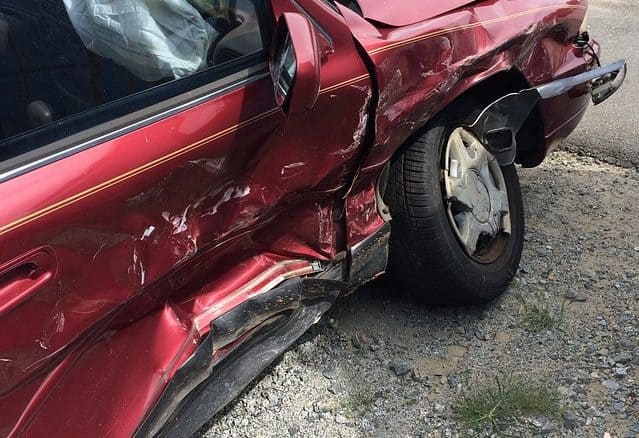This article is written by Ms. Nikara Liesha Fernandez from the School of Law, Christ University Bangalore. This article deals with some of the key provisions of the Motor Vehicles Act, 1988 and how the courts of law have applied these provisions in their landmark judgments over time.
This article has been published by Diva Rai.
Introduction
Due to industrialization and urbanization, with cities turning into metropolitans and commercial powerhouses, the growth of the automobile sector has also been exponential over time. It has now become a common feat that every urban household has at least one car which they use as their family car. Being such a huge market, there are a lot of problems which this industry poses to the public as well as the environment in general.
Rules were necessary to ensure the safety of drivers on the public roads as well as that of the vehicles to ensure that the environment was not getting polluted due to their engine exhausts and other dangerous gases emitted by them. This article aims at discussing the various important cases of the Motor Vehicles Act, 1988 (MVA). In addition to clarifying such concepts, as will be evident from the following judgments, the courts have attempted to modify such concepts as well to best suit the varying circumstances of each case. Two unique aspects of this Act are with regard to the principle of no-fault liability and insurance of motor vehicles against third party claims which will be elaborated upon further in this article.
The principle of no-fault liability
Section 140 of the Motor Vehicles Act, 1988 deals with the principle of ‘no-fault liability’. According to this principle, the owners of motor vehicles are liable to pay for the compensation of the victims of accidents caused by them. The criteria through which a person can claim no-fault liability is where the death or permanent disablement of a person arises due to the use of a motor vehicle, thus rendering the owner to be jointly as well as severally liable to pay compensation for the same. The fixed amount to be paid in the case of death is Rs. 50,000 and in the case of permanent disablement (that includes permanent privation of eyesight, hearing or the joints or permanent disfigurement of the head or face as well as permanent destruction or impairment to the powers of any member or their joints), a sum of Rs. 25,000.
Another feature of the principle of no-fault liability is that the claimant is not required to establish that the death or permanent disablement was due to any wrongful act/neglect/default of the owner. The same claim cannot be defeated nor can compensation for the same be reduced on the basis of the share of the claimant in his/her responsibility in causing the death/ permanent disablement of the victim.
It is important to note that a person who is charged under Section 140 of the MVA is also liable to pay compensation under any other law. The amount paid under Section 140 of the MVA will also be reduced from the compensation granted under Section 163A if such a situation arises. The main purpose of Section 140 is to provide aid in cases of emergencies and as such the claims under this section are to be disposed of first even if a claim is made under Section 163A and the individual is later required to pay the difference in the sums (if the first amount is more then the second amount need not be paid).
Cases
The Oriental Insurance Co. Ltd v. Hansrajbhai V. Kodala & Ors (2001)
In this case, the question was with regard to whether a claim for compensation under Section 163A on the structured formula basis would be in addition to or an alternative measure to a claim for compensation under Section 140 of the MVA.
The Court held that the compensation granted under Section 163A is a final measure and not an interim one. As such, the adjustment of compensation paid under Section 140 is awarded under the fault liability principle that is payable under Section 168 of the MVA and not under Section 163A.
Thus, Section 163A excludes the payment of compensation on the basis of the fault and the addition to claim compensation under Section 163A is in addition to Section 140 was rejected by the Court.
National Insurance Co.Ltd v. Sinitha & Ors (2011)
In this case, the question posed to the Court was with respect to whether a claim under Section 163A of the MVA fell under the principle of fault or no-fault liability.
The rationale that helped the Court arrive at its decision, in this case, was the fact that since it was open to the concerned party to defeat any claim under Section 163A on the grounds of wrongful act/neglect/default unlike a claim under Section 140. Although Section 140(3) is similar to the provision under 163A which states that the aggrieved party need not establish the wrongful act/neglect/default of the opposite party, a provision similar to Section 140(4) is absent. This gives the opposite party a chance to defeat the claim. From this rationale, it is evident that the burden of proof rests on the defence and as such, it is founded on the fault principle.
Further, the titles of both the sections themselves clearly state their intention i.e. ‘No fault’ as compared to ‘Third-party risks’. The Court held that although the structured formula basis was a shortcut to provide a quick remedy, it can still lead to a substantial claim and thus cannot be banned from any defense as in the no-fault principle. The overriding effect of Section 163A would still prevail as the same cannot be diluted.
Insurance against third party risks
The insurance against third party risks refers to the safety net granted to third parties who are any individuals other than the insurer and the holder of the insurance policy. The third-party has been given an inclusive definition to cover all possible individuals including the Government. The onus of payment rests on the insurer who is responsible to cover all liabilities that may arise in the case of death or bodily injury caused to any person, property or third party arising out of the use of the vehicle covered by the insurance policy in a public place.
It also includes the liability in the case of death or bodily injury to any passenger of a public service vehicle, damage of third party property and death/bodily injury of the third party even if it occurs in a place other than the place of use of the vehicle due to an act of omission. There are certain limitations to the liability of the insurer which are enumerated under Section 147 of the Act.
Cases for third party risks
United India Insurance Co. Ltd. v. Karam Chand & Ors. (2011)
In this case, the Court established the principle that third parties include all those who suffer as a result of the use of the said motor vehicle in a public place. These parties could be the occupants of the vehicle or even any other persons travelling by road or in any other vehicle who fall victim to the accident. All these individuals are liable to be awarded compensation as a result of such an accident. The compensation is to be awarded by the insurance company that the concerned vehicle holds a policy with.
Smt. Tulasi Sahukar v. New India Assurance Company (2010)
In this case, the issue addressed by the Court was with regard to the third party liability after the death of the insured and during the process of transfer of ownership of the vehicle.
The Court held that the transfer of the insurance policy to the wife of the deceased was automatic and was deemed to have happened even if the policy had not changed the name of the beneficiary despite the transfer of ownership of the vehicle has already occurred.
Thus, the liability of the insurer would still be valid and does not cease to be in effect even if the owner fails to intimate the insurer about the death as per the provisions of the Act. The insurer would thus still be liable to compensate third party victims who the policy owner has harmed.
Uttar Pradesh State Road Transport Corporation v. National Insurance Co. & Ors. (2021)
In this case, the question put before the Supreme Court was whether the insurance company or the corporation/owner of the vehicle was liable to pay the award of compensation declared by the High Court. The argument of the defendant was that since the Corporation was operating the said vehicle when the accident took place, they were liable to pay the award.
The Court answered this question by reiterating the precedent set by it which stated that “when the effective control and command of the bus is with the Corporation, the Corporation becomes the owner of the vehicle for the specified period”. Further, through the principle of vicarious liability, both the vehicle in question as well as the insurance policy is deemed to be transferred to the person in whose control the vehicle is for the time being and it would be the insurance company’s duty to compensate the same.
Cases relating to motor vehicle insurance policies
Divisional Manager, Oriental Insurance Company Ltd. v. Tushar Ranjan Dash & Ors. (2010)
In this case, the issue that the Court addressed was with regard to the situation that arises in the event of cancellation of an insurance policy prior to an accident.
According to the facts of this case, the insurance company themselves unilaterally cancelled the insurance policy prior to the accident due to the dishonour of a cheque deposited towards the premium by the insured party.
The question that arose was whether the legal heirs of the deceased victim/third party could still claim compensation from the insurance company.
The Court held that since the contract of insurance contemplates third parties who are not signatory to the party, this essence needs to be maintained and thus regardless of the cheque being dishonoured or not, they were protected by such an insurance contract. The dishonour of the cheque does not absolve the insurance company of their responsibility, however, after compensating the third party in this case, the company can require the insured to repay the same amount to the company.
New India Assurance Co. Ltd. v. Rula & Ors. (2000)
In this case, the Court again highlighted that the cancellation of an insurance policy by the insurer, solely on the grounds of the insurance premium not being paid due to the cheque being dishonoured, does not cancel their liability to third parties. Whether the premium has been paid or not is not the concern of the third party. The third party is only concerned with whether there is the existence of a policy or not. It is solely on this basis that the third party claims compensation from the insurer.
National Insurance Co.Ltd v. Parvathaneni & Anr (2009)
The Supreme Court of India, in this case, held that when it has been established that in the instance of a cheque towards the insurance premium being dishonoured thus rendering the insurance company free from the liability of paying the compensation amount to the claimants, then the concept of pay and recover is in contradiction to the same. The Court logically held further that when a person has no liability to pay at all, he/she cannot be compelled to do the same.
The doctrine of pay and recover
The Doctrine of ‘pay and recover’ is covered under Section 149 of the MVA. The basic essence of this policy is that the insurer is required to dispose of the claims for third party compensation as quickly as possible as they are most in need of financial aid at the time of an accident or emergency. This, however, does not absolve the holder of the policy completely from paying any amount to the insurer for indemnifying them. In case the sum is substantial and the owner does not have such a large amount present with him/her at the moment, the insurance company can pay on behalf of him/her and recover the same amount over a period of time.
National Insurance Co. Ltd v. Swaran Singh & Ors. (2004)
In this case, the question dealt with was what defences could be used by the insurance company to prove that they are not liable to pay any sum of money according to the doctrine of pay and recover.
The Court held that only if the defence used by the insurer has formed a fundamental part of the accident can the insurer escape their liability. The defences available to the insurer are as follows-
- If the owner of the insured vehicle or driver of the same was carrying a fake license.
- If the owner of the insured vehicle or the driver of the same carried no license whatsoever.
- If the owner of the insured vehicle or the driver of the same carried an expired license and no application had been made for the renewal of the same either.
- If the license held by the driver or owner of the vehicle carried another class of vehicle which was not that which caused the accident.
- If a person holding a learner’s license was solely driving the vehicle.
Thus, the onus of proof rests on the insurer to prove the validity of his defence. The insurer shall also prove that the insured was guilty of negligence and failed to exercise reasonable care in fulfilling the policy criteria. The rule put forward by the court in determining the verdict of this case and for future cases resembling the same was the rule of main purpose.
The same principle was applied by the Supreme Court of India in the case of Shamanna vs. The Divisional Manager (2018).
In the case of National Insurance Co. Ltd vs Laxmi Narain Dhut (2007), the Supreme Court of India applied the golden rule of interpretation and came to the conclusion that fake licenses cannot be renewed by any Licensing Authority and that even if by some chance such renewal was to occur, the same cannot be said to take away the effect of the fake license by validating it. The court also shed light on the difference between third party rights and own damage cases.

Parminder Singh v. New India Assurance Company Ltd. (2019)
In this case, the Supreme Court of India held that in the event of the permanent functional disability of an individual in the age group of 15-23 years old, thus ruining his/ her prospects of living a normal family life as well as having no capacity to hold a regular job and thus not having the ability to earn a living for the rest of his/her life, the functional disability of the individual can be said to be 100%. As a result of the same, the plaintiff was entitled to a lump sum compensation.
As for the question of who was liable to pay such compensation, the Court held that the insurance company was absolved from the same as per the conditions discussed in the case above wherein the principle of ‘pay and recover’ cannot apply in cases where the driver of the offending vehicle does not possess a valid driving license. The insurance company in this case was directed to pay the enhanced compensation to the victim and recover the same from the owners and drivers of the offending vehicles later.
Loss of consortium and loss of love and affection
The Supreme Court of India in the case of The New India Assurance Company vs. Somwati (2020) dealt with the issue of whether only the wife of the deceased in a motor vehicle accident is entitled to a consortium or whether the same can be awarded to the parents and children of the deceased as well. The concepts dealt with in this case was that of parental, filial and spousal consortium. The Court thus upheld the need for all the aforementioned forms of compensation as they all fall within the ambit of relief provided to aggrieved individuals through the beneficial Motor Vehicles Act, 1988. Compensation on the grounds of ‘loss of love and affection’ was however not granted by the Court as there was no justification of providing the same under a separate head when it was deemed to be covered under the loss of consortium itself.
Conclusion
In order to provide more stringent measures and an exponential increase in penalties, which were the need of the hour in order to control issues such as road and environmental health, road safety, the fitness of vehicles and provide additional means of compensation for victims of road accidents such as during the ‘golden hour’ and to the ‘Good Samaritan’, the legislature enacted the Motor Vehicles (Amendment) Act, 2019. This Act also provided for the establishment of a National Road Safety Board under the Central Government as well as a National Transportation Policy and National Register for Driving Licenses and Vehicle Registration. Another interesting feature brought forward by this amendment was the inclusion of taxi aggregators under the ambit of the MVA as well as providing for means to obtain driving licenses online and better insurance policies.
References
- https://www.indiacode.nic.in/bitstream/123456789/9460/1/a1988-59.pdf
- https://indiankanoon.org/
- https://www.casemine.com/
LawSikho has created a telegram group for exchanging legal knowledge, referrals and various opportunities. You can click on this link and join:
https://t.me/joinchat/L9vr7LmS9pJjYTQ9
Follow us on Instagram and subscribe to our YouTube channel for more amazing legal content.
 Serato DJ Crack 2025Serato DJ PRO Crack
Serato DJ Crack 2025Serato DJ PRO Crack










 Allow notifications
Allow notifications



